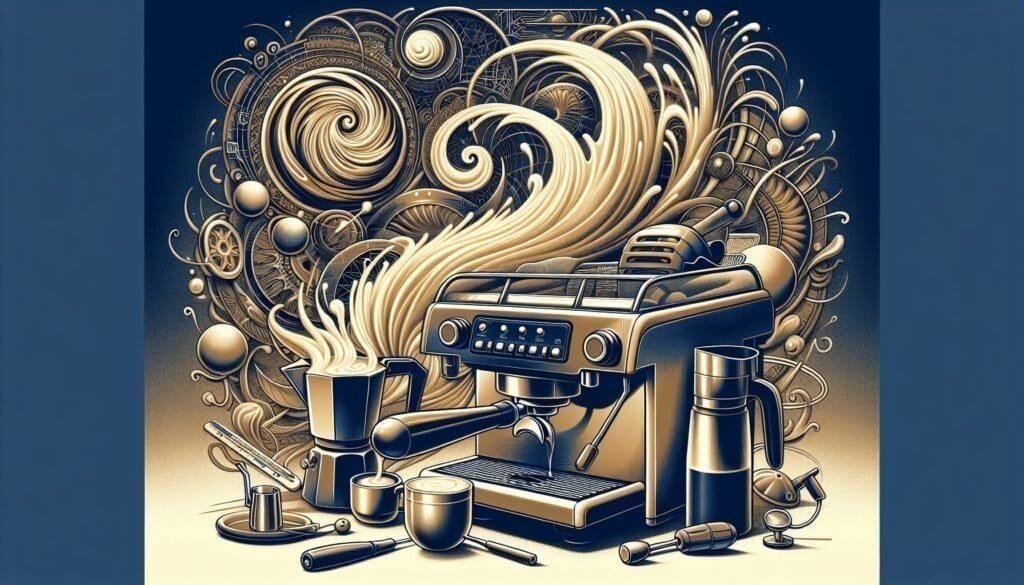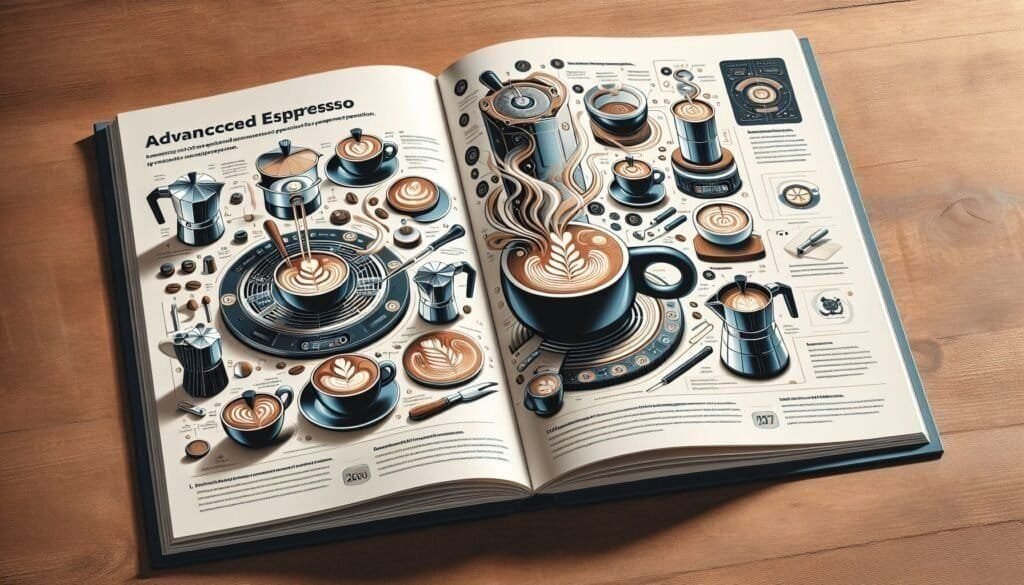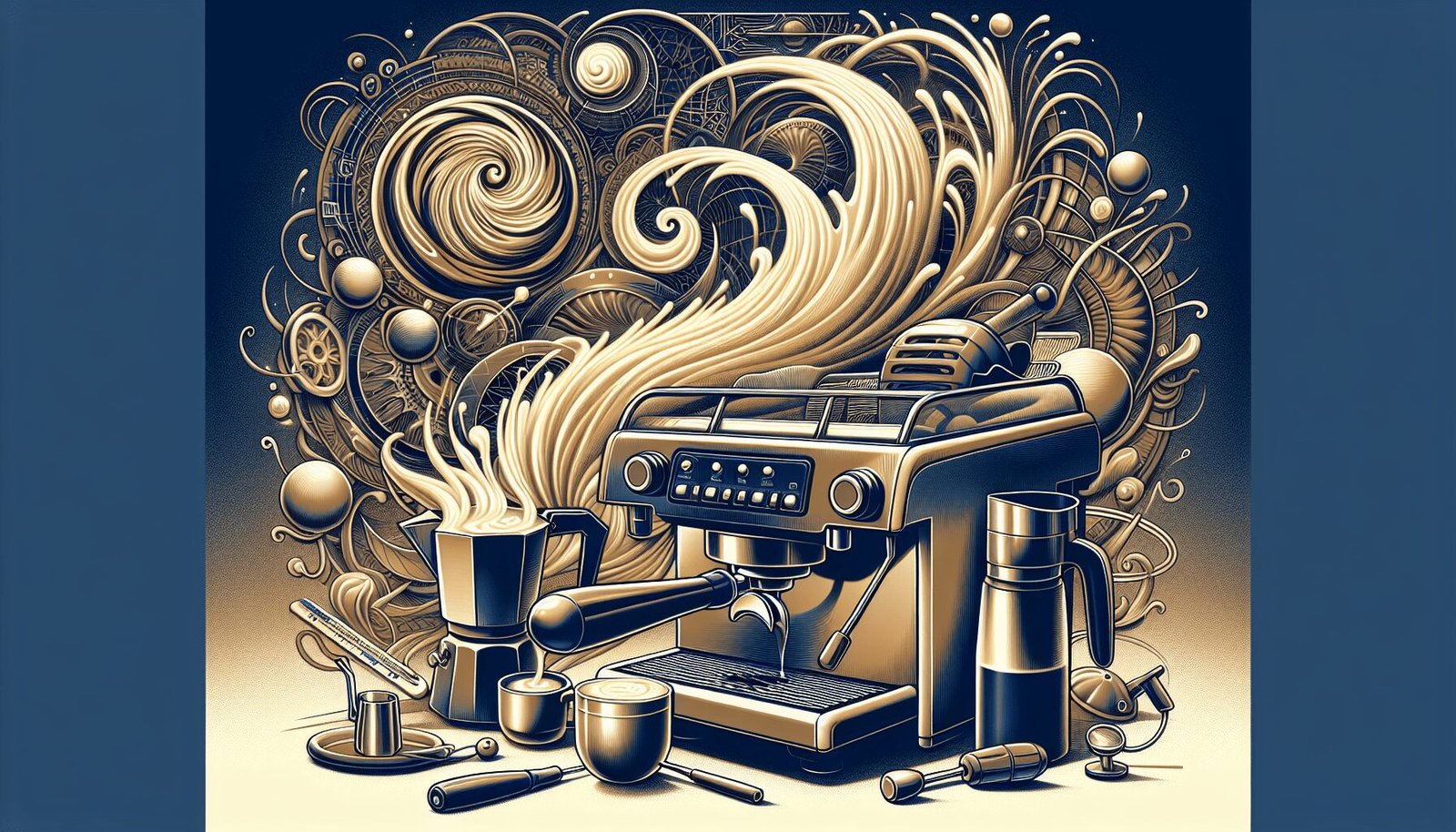Imagine yourself in a world engulfed by the rich aroma of freshly brewed coffee, where each sip transports you to a realm of pure bliss. Now envision being able to recreate this experience in the comfort of your own home, with every cup boasting the perfect balance of flavor and velvety smoothness. In “The Ultimate Guide to Advanced Espresso: Perfecting the Steaming Process,” we unlock the secrets of achieving the pinnacle of coffee artistry. Delve into the captivating world of espresso steaming techniques that will elevate your morning ritual to new heights. Prepare to embark on a journey that will not only tantalize your taste buds but also awaken your inner barista. Get ready to master the art of the perfect espresso steam.
Understanding Espresso Basics
To start off our journey into the world of advanced espresso, it’s important to have a good understanding of the basics. So, what exactly is an espresso? Well, an espresso is a concentrated form of coffee that is brewed by forcing hot water through finely ground coffee beans. It is characterized by its strong flavor and rich aroma. Unlike other coffee types, which use a longer brewing process, espresso is brewed quickly, resulting in a smaller serving size but a more intense flavor profile.
Difference between espresso and other coffee types
One of the key differences between espresso and other types of coffee is the brewing method. While traditional drip coffee involves passing water through a bed of coffee grounds, espresso machines force pressurized water through finely ground coffee, extracting a higher concentration of flavor compounds. This results in a bolder and more robust flavor profile compared to other brewing methods. Additionally, the serving size of espresso is usually much smaller than a cup of regular coffee.

Main ingredients required for a good espresso
To achieve a good espresso, you need a few key ingredients. First and foremost, high-quality coffee beans are essential. Look for beans that are specifically labeled as suitable for espresso to ensure the best results. Next, you’ll need clean, filtered water, as the quality of the water can greatly affect the taste of the espresso. Finally, don’t forget about the importance of the grind size. For espresso, a fine grind is necessary to allow for proper extraction of flavors.
Espresso Making Equipment
Now that we have a grasp of the basics, let’s dive into the different types of espresso machines available. There are two main types: manual and automatic. Manual espresso machines require you to manually control the brewing process, from grinding the beans to pulling the shot. These machines offer a high level of control but require more skill and experience. On the other hand, automatic espresso machines automate the brewing process, making it easier for beginners to achieve consistent results.
When choosing a good espresso machine, there are a few factors to consider. First, think about your budget and how much you’re willing to invest. Quality espresso machines can range from a couple of hundred dollars to several thousand, so it’s important to find one that fits your needs and budget. Additionally, consider the features you want. Some machines offer programmable settings, built-in grinders, or even the ability to froth milk automatically. Choose a machine that aligns with your preferences and brewing style.
Understanding the different parts of an espresso machine is also crucial. From the portafilter to the group head, each component plays a vital role in the brewing process. Familiarize yourself with these parts and their functions to maximize your understanding and control over your espresso machine. Don’t forget about maintenance and cleaning either. Proper care of your equipment is essential to ensure the longevity and performance of your espresso machine.

Coffee Selection and Preparation
When it comes to selecting coffee beans for your espresso, it’s important to choose ones that are specifically labeled for espresso brewing. These beans are often darker roasted and have a more pronounced and robust flavor profile, which is ideal for espresso. Look for beans that are fresh and within the optimal roasting period for the best results.
Grinding the coffee beans is another crucial step in the espresso-making process. For espresso, a fine grind is necessary to ensure proper extraction. Investing in a high-quality burr grinder will allow you to achieve a consistent grind size, which is essential for extracting the desired flavors from the coffee beans. Avoid pre-ground coffee as much as possible, as the flavors can degrade quickly once the beans are exposed to air.
Another key aspect of coffee preparation for espresso is the coffee-to-water ratio. This ratio determines the strength and flavor intensity of your espresso shot. Generally, a ratio of 1:2 (one part coffee to two parts water) is a good starting point. However, feel free to adjust the ratio according to your personal preference, experiment, and find the right balance that suits your taste.
Step-by-step Espresso Making
Now that we have our coffee and equipment ready, let’s delve into the actual process of making espresso. The first step is dosing and tamping. Dosing refers to the measurement and distribution of coffee into the portafilter. This step is crucial for achieving consistent results. Use a scale to measure the desired amount of coffee and distribute it evenly in the portafilter. Once dosed, you’ll need to tamp the coffee. Tamping involves applying pressure evenly and firmly to the coffee grounds using a tamper. This step helps to create a consistent bed of coffee for proper extraction.
Next, we move on to module control. This refers to the process of controlling the brewing parameters, such as water temperature, pressure, and duration. Different recipes and coffee beans may call for variations in these parameters, so it’s essential to experiment and find the ideal combination that suits your taste preferences. Keep in mind that even small adjustments can make a significant difference in the flavors you extract.
Lastly, we have extraction time. The extraction time refers to the duration it takes for water to pass through the coffee grounds and into your cup. The recommended extraction time for espresso is typically around 25-30 seconds. However, this can vary depending on factors such as grind size, dose, and brewing temperature. Monitoring the extraction time closely will help you achieve the perfect balance of flavors, avoiding under or over-extraction.
Perfecting the Steaming Process
Now that we have covered the basics of making espresso, it’s time to focus on perfecting the steaming process. Steaming is a crucial step in creating espresso-based drinks such as lattes and cappuccinos. It involves introducing steam into the milk, which not only heats it but also creates microfoam that adds texture and flavor complexity to the final drink.
The steaming process can significantly impact the taste and texture of your espresso. Properly steamed milk should have a creamy and velvety texture that complements the bold flavors of the espresso. Oversteaming can result in milk that is too hot and lacks texture, while understeaming can leave the milk flat and lacking in complexity.
Milk plays a key role in the steaming process. The type of milk you choose can greatly impact the texture and flavor of the final drink. Whole milk is often preferred for its richness and creaminess, while non-dairy alternatives like almond or oat milk can offer a unique flavor profile. Experimenting with different types of milk can lead to exciting and delicious results.
Steaming milk to the ideal temperature is a crucial step in achieving the perfect texture and flavor. The recommended range for milk steaming is usually between 140-160°F (60-70°C). This temperature range allows the milk to develop a creamy texture without scorching or overheating. Investing in a reliable thermometer can help you achieve consistent results.
To steam milk using an espresso machine, start by purging any excess water from the steam wand. Position the steam wand just below the surface of the milk and open the steam valve. Gradually bring the pitcher down as the milk expands and froths. It’s important to keep the steam wand at a slight angle to create a whirlpool effect, ensuring even heat distribution. Once the milk reaches the desired temperature, stop steaming and tap the pitcher on the counter to remove any air bubbles.
Advanced Steaming Techniques
Now that we have covered the basics of steaming milk, let’s explore some advanced techniques to take your espresso game to the next level. When steaming milk, you have the option to create micro-foam or macro-foam, each offering a distinct texture and mouthfeel.
Micro-foam refers to a velvety, creamy texture with minimal visible bubbles. This type of foam is perfect for lattes and latte art. To create micro-foam, position the steam wand just below the surface of the milk and introduce steam gradually. Continuously move the pitcher in a circular motion to distribute the heat evenly. The goal is to incorporate air into the milk while minimizing large bubbles.
Macro-foam, on the other hand, refers to a thicker and more voluminous foam with larger bubbles. This type of foam is commonly used in cappuccinos and other drinks that require a more pronounced foam texture. To create macro-foam, position the steam wand slightly deeper into the milk and introduce more steam. Slowly move the pitcher up and down to incorporate more air into the milk.
Preventing over-steaming and scorching is also crucial in advanced steaming techniques. Oversteamed milk can taste burnt and lack sweetness. To prevent this, make sure to monitor the temperature closely and stop steaming once the milk reaches the desired range. Avoid steaming for too long, as prolonged steaming can result in scorched milk and off-flavors.
Serving Espresso
Presentation is key when serving espresso. Pouring techniques can greatly enhance the visual appeal of your espresso shots. One common technique is the “tulip” pour, where you pour the steamed milk slightly off-center of the espresso shot, creating a beautiful layered effect. Another popular technique is the “heart” pour, where you pour the milk directly into the center of the espresso shot, creating a heart shape on the surface.
Choosing the right cups for serving espresso is also important. Espresso cups are typically small, holding about 2-3 ounces of liquid. They are designed to keep the espresso hot while showcasing its crema and aroma. Look for cups with thick walls and handles that allow for easy gripping. Additionally, consider the material of the cups. Ceramic cups are popular for their heat retention, while glass cups offer a modern and elegant aesthetic.
When it comes to serving temperature, espresso is best enjoyed hot. The ideal serving temperature for espresso is typically between 160-170°F (71-77°C). This temperature allows the flavors to fully develop while maintaining a pleasant drinking experience. Investing in a thermometer can help you ensure that you serve your espresso at the optimal temperature.
Common Mistakes and Remedies in Espresso Making
Even with all the knowledge and practice, it’s common to make mistakes when making espresso. Identifying these common errors and knowing how to rectify them is crucial in improving your brewing skills.
One common mistake is under-extraction, which results in a weak and sour-tasting espresso. To rectify this, try adjusting the grind size to make it finer and increase the brew time. On the other hand, over-extraction leads to a bitter and overpowering flavor. To remedy this, try coarsening the grind size and decreasing the brew time.
Another common mistake is improper milk steaming. Oversteamed milk can be salvaged by discarding it and starting over with fresh milk. For understeamed milk, continue steaming until the desired texture is achieved, taking care not to overheat the milk in the process.
To avoid repeating these mistakes, it’s important to pay attention to the details, such as grind size, dose, and extraction time. Keep a brewing log to track your variables and adjust accordingly. With practice and experimentation, you’ll be able to identify and rectify these mistakes, ultimately improving your espresso-making skills.
Exploring Espresso Recipes
Now that you have mastered the art of brewing a perfect espresso shot, it’s time to get creative and explore different espresso recipes. Customizing your espresso allows you to tailor the flavors to your preferences and create unique and delicious drinks.
Start by experimenting with different syrups and sauces. From caramel to hazelnut, there are endless options to add a touch of sweetness and flavor complexity to your espresso. Don’t be afraid to mix and match flavors to create your signature drink.
For a classic espresso shot, the recipe is simple. Start with a double shot of espresso, extracted for around 25-30 seconds. The resulting liquid should have a rich, dark color with a thick layer of crema on top. Serve in a preheated espresso cup for the ultimate experience.
If you enjoy milk-based drinks, cappuccinos and lattes are popular choices. A cappuccino consists of equal parts espresso, steamed milk, and microfoam, while a latte has more steamed milk and a light layer of foam on top. Experiment with different ratios and techniques to find your perfect balance of espresso and milk.
In conclusion, advanced espresso brewing is a skill that requires a deep understanding of the brewing process, as well as practice, patience, and experimentation. By mastering the basics of espresso, perfecting the steaming process, and exploring different recipes, you can elevate your coffee experience to new heights. So grab your espresso machine, some high-quality coffee beans, and get ready to embark on an espresso adventure like no other. Cheers to the perfect cup of espresso!




